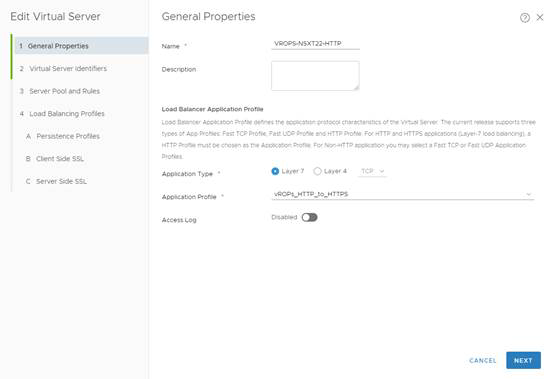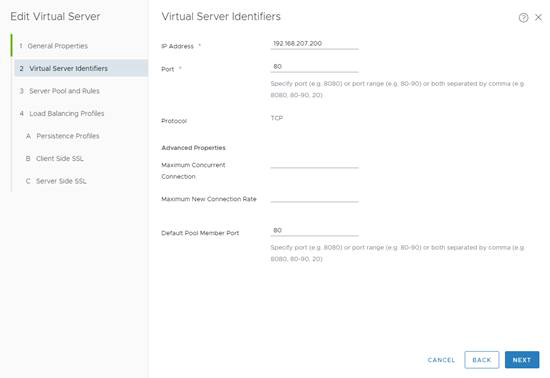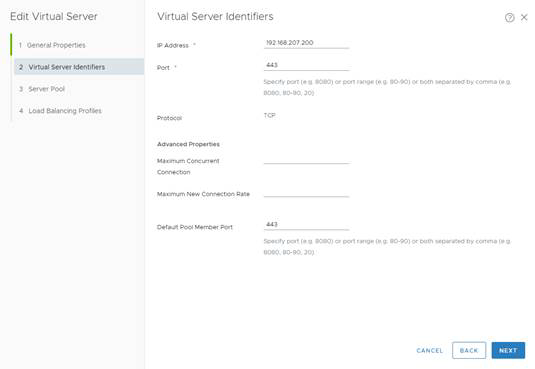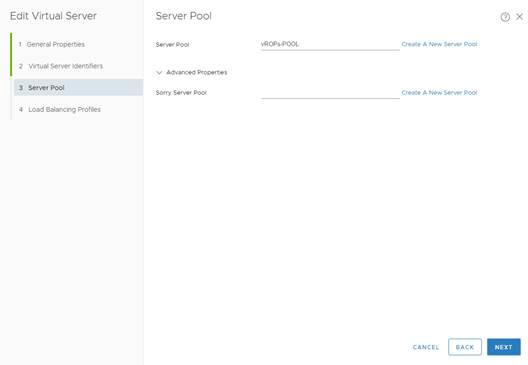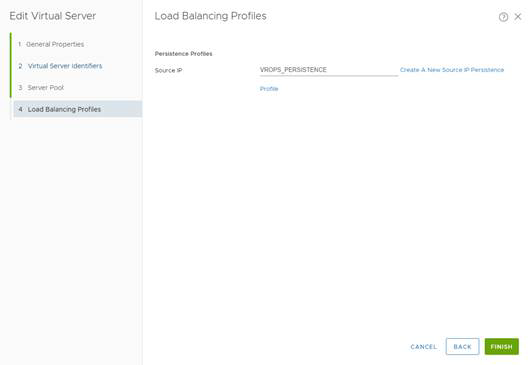NSX-T Virtual Servers contain the Virtual IP address (VIP) for the pools of nodes that will be accessed.
Steps to configure the Virtual Servers for HTTP requests:
Prerequisites
In this case, there are two separate VIPs created with the same IP address. One virtual server is used for redirecting insecure HTTP (port 80) traffic to a secure-channel connection – HTTPS (port 443). The second virtual server is used for handling and forwarding secure-channel traffic (HTTPS) to the backend systems.
 ) icon.
) icon.